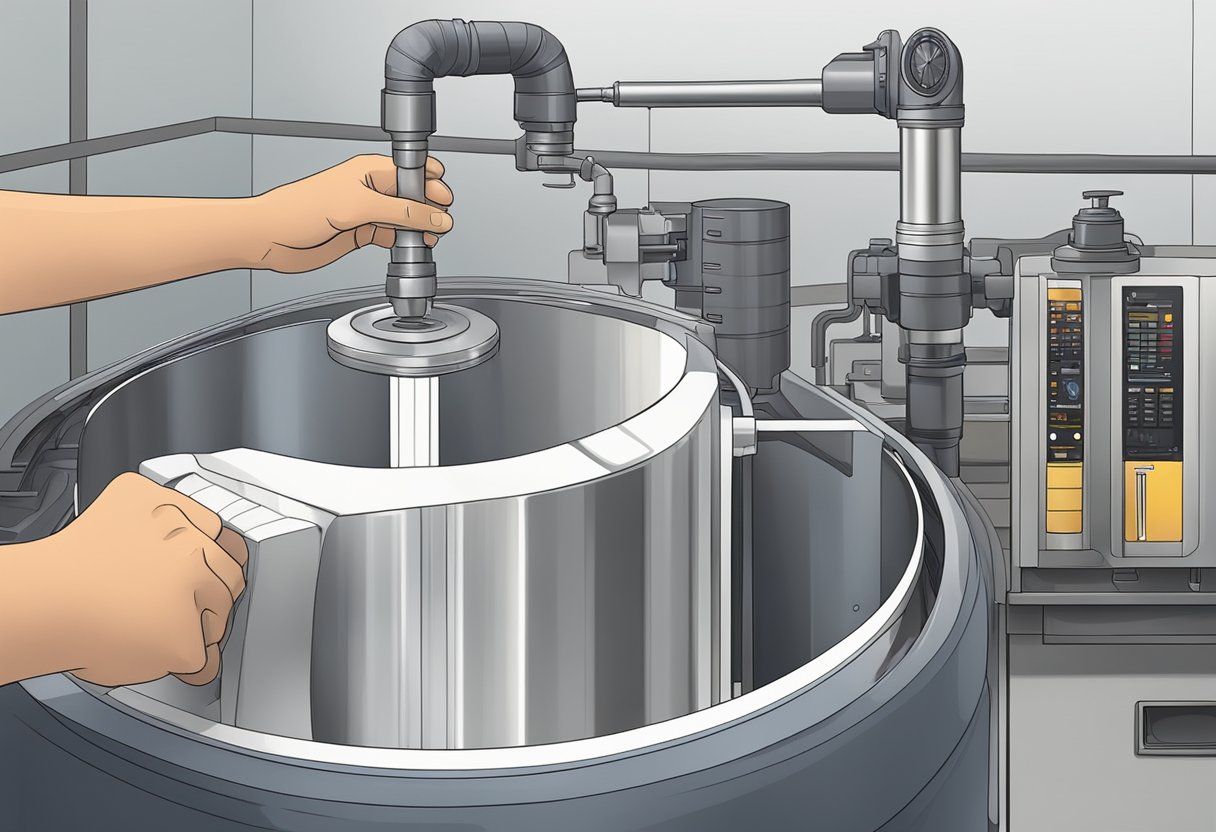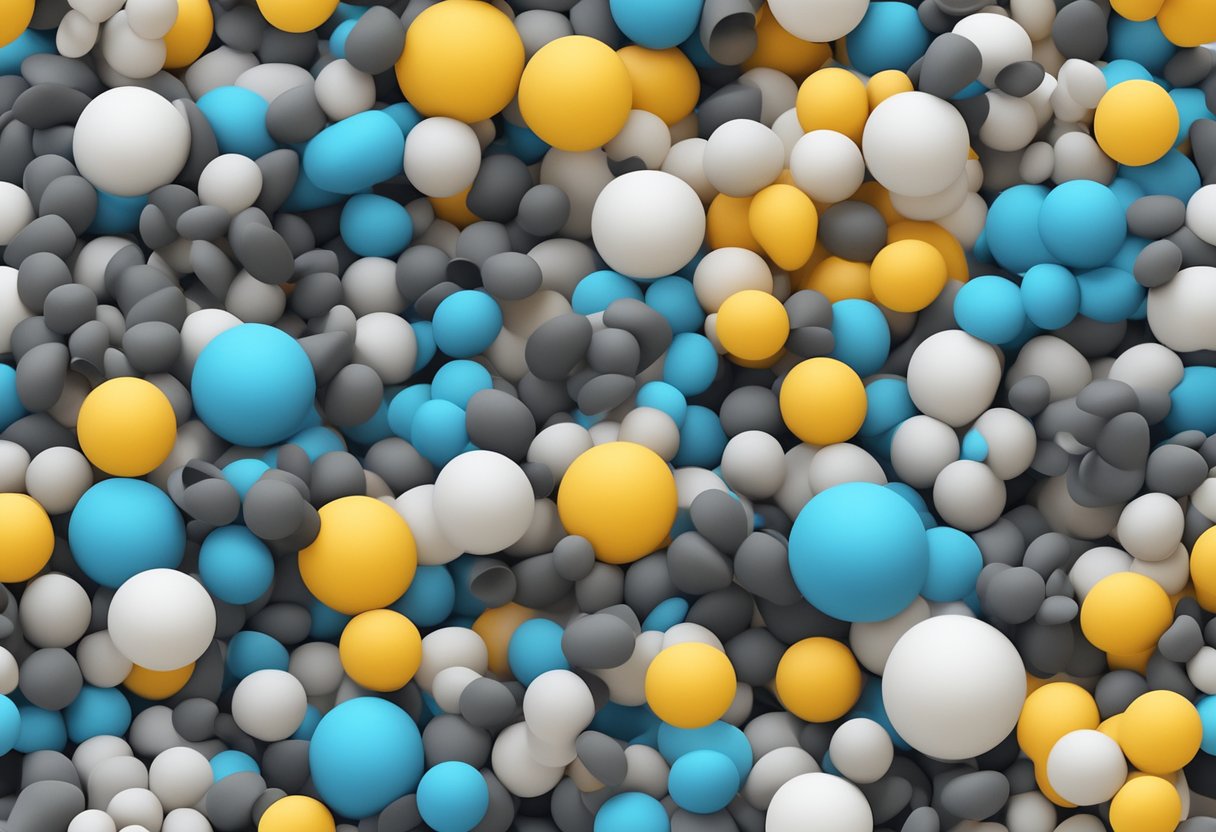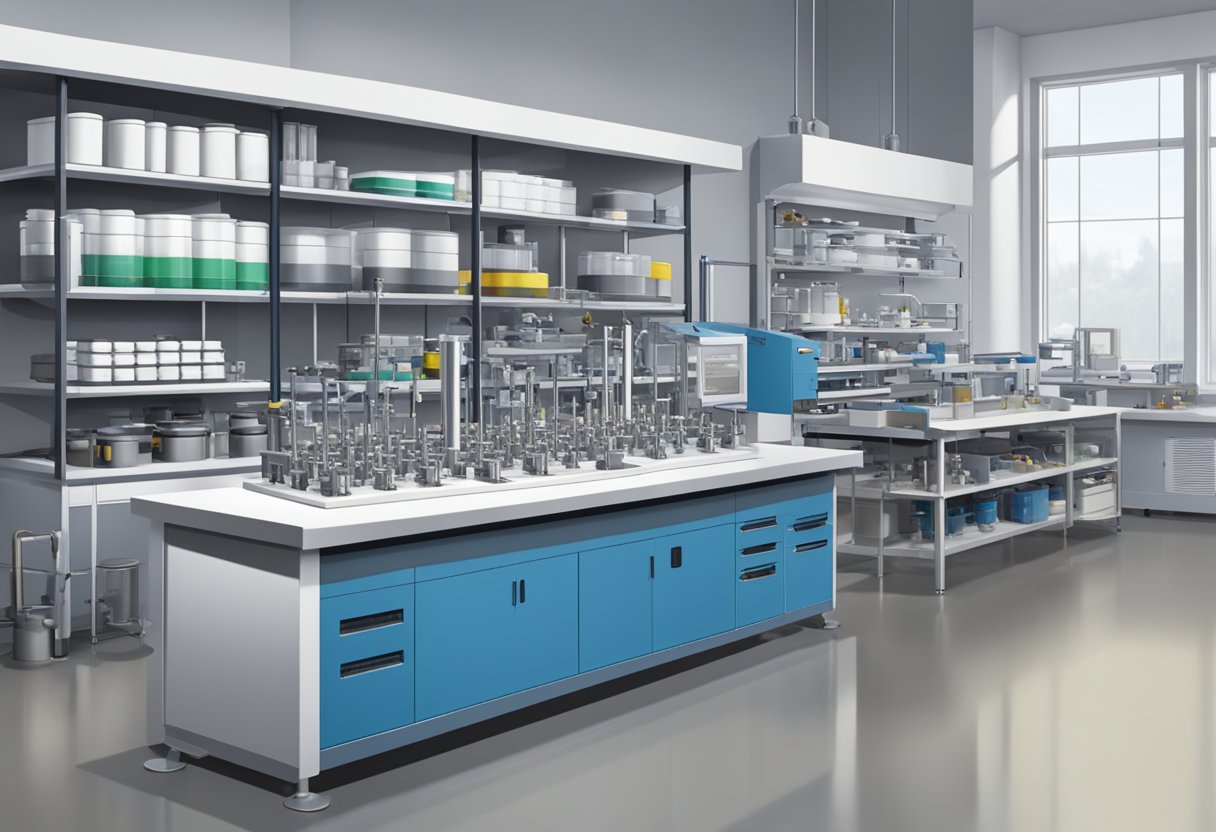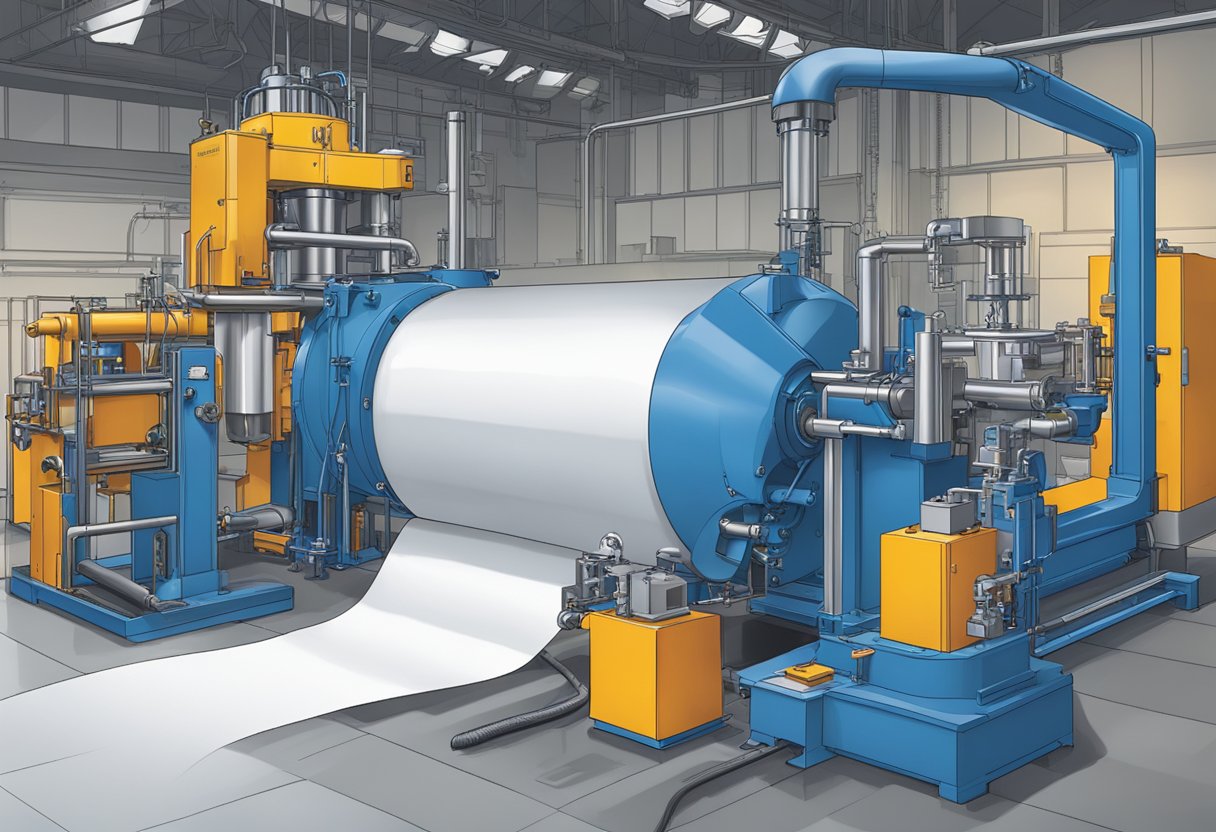Rubber Accelerator Uses: Boosting Efficiency and Performance in Rubber Production
19/01/2024
Rubber Accelerator Uses are chemicals that are added to rubber compounds to speed up the vulcanization process and improve the physical properties of the finished product. The use of rubber accelerators has become essential in the rubber industry as they significantly reduce the curing time of rubber products, thereby increasing productivity and reducing costs.

Rubber Accelerator Uses are used in a wide range of applications, including the production of tires, belts, hoses, seals, and other rubber products. They are also used in the manufacturing of adhesives, coatings, and other products that contain rubber components. The use of rubber accelerators has revolutionized the rubber industry, enabling manufacturers to produce high-quality rubber products that meet the demands of modern applications.
The benefits of using Rubber Accelerator Uses are numerous, including improved physical properties such as tensile strength, tear resistance, and abrasion resistance. They also improve the processing characteristics of rubber compounds, making them easier to handle and mold. In addition, rubber accelerators can improve the aging and weathering resistance of rubber products, ensuring that they remain functional and durable over an extended period.
Chemistry of Rubber Accelerators

Rubber accelerators are compounds that are added to rubber to increase the speed of vulcanization and reduce the time required for curing. They work by increasing the number of cross-links between the polymer chains, which results in a stronger and more durable rubber product.
Rubber Accelerator Uses are typically organic compounds that contain nitrogen and/or sulfur. They are classified into several categories based on their chemical structure and function, including thiazoles, sulfenamides, thiurams, dithiocarbamates, and guanidines. Each class of accelerators has a unique mechanism of action and is used for specific applications.
Thiazoles, for example, are one of the most widely used classes of Rubber Accelerator Uses. They work by forming a complex with zinc ions, which then reacts with the rubber to form cross-links. Sulfenamides, on the other hand, are used for their fast curing speed and excellent scorch resistance. Thiurams are often used in combination with other accelerators to improve their performance.
Rubber accelerators can also be classified as primary or secondary accelerators. Primary accelerators are used in higher concentrations and are responsible for the initial curing of the rubber. Secondary accelerators are used in lower concentrations and are responsible for the final curing and improving the properties of the rubber.
In summary, Rubber Accelerator Uses play a vital role in the production of high-quality rubber products. By understanding the chemistry of these compounds, manufacturers can select the appropriate accelerator for their specific application and optimize the curing process to produce the desired properties in the final product.
Types of Rubber Rubber Accelerator Uses

Rubber Accelerator Uses are categorized into several types based on their chemical composition and reaction characteristics. The four main types of rubber accelerators are thiazoles, sulfenamides, thiurams, and dithiocarbamates.
Thiazoles
Thiazoles are one of the most widely used types of Rubber Accelerator Uses. They are known for their fast-acting properties and are often used in the production of tires, conveyor belts, and other rubber products. Some common thiazoles used in the industry include 2-Mercaptobenzothiazole (MBT), 2,2′-Dithiobis(benzothiazole) (MBTS), and Zinc 2-Mercaptobenzothiazole (ZMBT).
Sulfenamides
Sulfenamides are another type of rubber accelerator that is commonly used in the production of rubber products. They are known for their excellent heat resistance and are often used in the production of industrial rubber products that require high-temperature resistance. Some common sulfenamides used in the industry include N-Cyclohexyl-2-benzothiazolesulfenamide (CBS) and N-Tert-Butyl-2-benzothiazolesulfenamide (TBBS).
Thiurams
Thiurams are a type of rubber accelerator that is known for their excellent curing properties. They are often used in the production of high-performance tires and other rubber products that require superior performance characteristics. Some common thiurams used in the industry include Tetramethylthiuram Disulfide (TMTD) and Tetraethylthiuram Disulfide (TETD).
Dithiocarbamates
Dithiocarbamates are a type of rubber accelerator that is known for their excellent scorch safety properties. They are often used in the production of rubber products that require good processing safety and scorch resistance. Some common dithiocarbamates used in the industry include Zinc Diethyldithiocarbamate (ZDEC) and Zinc Dimethyldithiocarbamate (ZDMC).
In conclusion, rubber accelerators play a critical role in the production of rubber products, and each type of accelerator has its unique properties and characteristics that make them suitable for specific applications.
Rubber Accelerator Applications

Rubber accelerators are widely used in various industries due to their ability to increase the speed of vulcanization and improve the physical properties of rubber products. The following are some of the most common applications of rubber accelerators.
Automotive Industry
Rubber accelerators are extensively used in the production of tires and other rubber products in the automotive industry. They improve the performance and durability of tires by reducing the time required for vulcanization and enhancing the strength, elasticity, and resistance to wear and tear of the rubber.
Industrial Products
Rubber accelerators are also used in the production of various industrial products, such as conveyor belts, hoses, seals, and gaskets. They help to improve the mechanical and chemical properties of rubber, making it more resistant to heat, chemicals, and abrasion.
Consumer Goods
Rubber accelerators are used in the production of various consumer goods, including footwear, gloves, and toys. They help to improve the strength, elasticity, and durability of rubber, making it more suitable for use in everyday products.
Overall, rubber accelerators play a crucial role in the production of rubber products in various industries. With their ability to improve the physical properties of rubber and reduce the time required for vulcanization, they have become an essential component in the manufacturing process of many products.
Manufacturing Process Enhancements
Rubber accelerators are essential additives in the manufacturing process of rubber products. They help to speed up the vulcanization process, improve the physical properties of rubber, and reduce the curing time. Manufacturers are constantly looking for ways to enhance the manufacturing process to increase efficiency and reduce costs.
One way to enhance the manufacturing process is by using pre-dispersed rubber accelerators. These are accelerators that have been pre-mixed with a carrier such as rubber or resin. Pre-dispersed accelerators offer several advantages over traditional accelerators. They provide better dispersion, reduce dust formation, and improve the mixing process. This results in a more uniform distribution of the accelerator throughout the rubber compound, leading to better control of the curing process.
Another way to enhance the manufacturing process is by using accelerators that are activated by heat. These are called thermally activated accelerators. They are activated at a specific temperature during the vulcanization process, which helps to reduce the curing time. Thermally activated accelerators are particularly useful in the production of thick rubber products such as tires, where curing time is an important factor.
In addition to pre-dispersed and thermally activated accelerators, manufacturers can also use accelerators that are activated by light. These are called photo-activated accelerators. They are activated by exposure to ultraviolet light during the curing process. Photo-activated accelerators offer several advantages over traditional accelerators. They provide better control of the curing process, reduce the curing time, and improve the physical properties of the rubber product.
Overall, manufacturers have several options when it comes to enhancing the manufacturing process of rubber products. By using pre-dispersed accelerators, thermally activated accelerators, and photo-activated accelerators, they can improve efficiency, reduce costs, and produce high-quality rubber products.
Health and Safety Considerations
Rubber accelerators are chemicals that can pose health and safety risks if not handled properly. It is important to take necessary precautions to prevent accidents and exposure to these chemicals.
Personal Protective Equipment
When handling rubber accelerators, it is important to wear appropriate personal protective equipment (PPE) to prevent skin and eye contact, inhalation, and ingestion. PPE includes gloves, safety glasses or goggles, respirators, and protective clothing.
Storage and Handling
Rubber accelerators should be stored in a cool, dry, and well-ventilated area away from incompatible materials such as oxidizing agents and acids. They should be handled with care to prevent spills and leaks.
Health Effects
Exposure to rubber accelerators can cause skin irritation, allergic reactions, and respiratory problems. Prolonged or repeated exposure can lead to more serious health effects such as cancer and reproductive disorders. It is important to follow proper safety procedures and seek medical attention if any symptoms occur.
Disposal
Rubber accelerators should be disposed of properly in accordance with local regulations. They should not be released into the environment or disposed of in regular trash. Contact local authorities for guidance on proper disposal methods.
Overall, proper handling and disposal of rubber accelerators is necessary to prevent health and safety risks. It is important to follow safety procedures and use appropriate PPE to minimize exposure.
Environmental Impact
Rubber accelerators have been known to have both positive and negative environmental impacts. On one hand, they contribute to the production of durable and long-lasting rubber products, reducing the need for frequent replacements and therefore reducing waste. However, on the other hand, the production and use of rubber accelerators can also have negative environmental consequences.
One major concern is the potential for rubber accelerators to leach into soil and water systems, leading to contamination. This can occur during the production process as well as during the use and disposal of rubber products. Some rubber accelerators, such as benzothiazole-based compounds, have been found to be toxic to aquatic life and can persist in the environment for extended periods of time.
Another concern is the potential for rubber accelerators to contribute to air pollution. During the production process, volatile organic compounds (VOCs) can be released into the air, contributing to smog and other forms of air pollution. Additionally, when rubber products are burned or incinerated, they can release harmful pollutants such as dioxins and furans.
To mitigate these environmental impacts, there have been efforts to develop and use alternative rubber accelerators that are less harmful to the environment. Additionally, there are regulations in place to limit the release of harmful pollutants during the production and use of rubber accelerators and rubber products.
Overall, while rubber accelerators have played an important role in the production of durable and long-lasting rubber products, it is important to consider their potential environmental impacts and work towards minimizing them.
Regulatory Standards
Rubber accelerators are widely used in the rubber industry, and regulatory standards have been put in place to ensure their safe use. The regulatory standards for rubber accelerators vary by country and region, but they generally aim to limit exposure to these chemicals and prevent harm to human health and the environment.
In the United States, the Environmental Protection Agency (EPA) regulates the use of rubber accelerators under the Toxic Substances Control Act (TSCA). The TSCA requires manufacturers and importers of chemical substances, including rubber accelerators, to submit pre-manufacture notices to the EPA before they can be produced or imported. The EPA evaluates the potential risks associated with the chemical and may impose restrictions or require additional testing before allowing its use.
In the European Union, rubber accelerators are regulated under the Registration, Evaluation, Authorization and Restriction of Chemicals (REACH) regulation. REACH requires manufacturers and importers of chemical substances to register them with the European Chemicals Agency (ECHA) and provide information on their properties, uses, and potential risks. The ECHA evaluates the information and may impose restrictions or require additional testing before allowing the chemical to be used.
Other countries and regions, such as China and Japan, also have regulatory standards for rubber accelerators. These standards may include limits on the amount of the chemical that can be used in products, requirements for labeling and safety data sheets, and restrictions on the use of certain types of rubber accelerators.
Overall, regulatory standards aim to ensure the safe use of rubber accelerators in the rubber industry while minimizing the risk of harm to human health and the environment. Manufacturers and users of rubber accelerators should be aware of these standards and comply with them to ensure the safety of their products and workers.
Global Market Trends
Rubber accelerators are widely used in the rubber industry to improve the performance of rubber products. The global market for rubber accelerators is expected to grow steadily in the coming years. The following are some of the current trends in the global rubber accelerator market:
- Increasing demand for rubber products: The demand for rubber products is increasing due to the growth of the automotive industry, construction industry, and other industries. This is driving the demand for rubber accelerators, as they are used to improve the performance of rubber products.
- Growing demand from emerging economies: The demand for rubber accelerators is growing in emerging economies such as China, India, and Brazil. These countries have large populations and growing economies, which are driving the demand for rubber products.
- Shift towards environmentally friendly rubber accelerators: There is a growing trend towards the use of environmentally friendly rubber accelerators. This is due to increasing environmental concerns and regulations. Many manufacturers are developing new rubber accelerators that are less harmful to the environment.
- Increasing investment in research and development: Many manufacturers are investing in research and development to develop new and innovative rubber accelerators. This is driving the growth of the market, as new products are being developed that offer better performance and are more environmentally friendly.
Overall, the global market for rubber accelerators is expected to continue to grow in the coming years, driven by increasing demand for rubber products and the development of new and innovative products.
Innovation in Accelerator Technology
Accelerators have been used in the rubber industry for decades to speed up the vulcanization process and improve the physical properties of rubber products. In recent years, there has been a significant amount of innovation in accelerator technology, leading to the development of new and improved accelerators.
One area of innovation has been in the development of environmentally friendly accelerators. Traditional accelerators, such as mercaptobenzothiazole (MBT) and dibenzothiazyl disulfide (MBTS), can release toxic substances during the vulcanization process, which can be harmful to human health and the environment. Newer accelerators, such as N-tert-butyl-2-benzothiazolesulfenamide (TBBS) and N-cyclohexyl-2-benzothiazolesulfenamide (CBS), have been developed to address these concerns.
Another area of innovation has been in the development of high-performance accelerators. These accelerators are designed to improve the speed and efficiency of the vulcanization process, resulting in higher quality rubber products. One example of a high-performance accelerator is 2-mercaptobenzothiazole disulfide (MBTS), which has been shown to improve the curing rate and physical properties of rubber compounds.
In addition to these advancements, there has also been a focus on improving the compatibility of accelerators with other rubber chemicals. This has led to the development of accelerator systems, which combine multiple accelerators and other rubber chemicals to achieve specific performance characteristics. For example, accelerator systems can be designed to improve the heat resistance, oil resistance, or abrasion resistance of rubber products.
Overall, the innovation in accelerator technology has led to significant improvements in the performance and environmental impact of rubber products. As the demand for high-quality, sustainable rubber products continues to grow, it is likely that we will see further advancements in accelerator technology in the years to come.
Challenges in Rubber Acceleration
Rubber acceleration is a crucial process in the manufacturing of rubber products. However, it comes with several challenges that manufacturers must overcome to ensure the quality and efficiency of the process.
One of the main challenges in rubber acceleration is achieving the optimal balance between speed and effectiveness. Accelerators that are too slow can result in prolonged curing times, while those that are too fast can cause premature vulcanization and reduce the quality of the final product. Manufacturers must carefully select the appropriate accelerator and dosage to achieve the desired results.
Another challenge is the potential for toxicity and environmental harm. Many accelerators contain chemicals that can be harmful to human health and the environment if not handled properly. Manufacturers must take appropriate safety measures and disposal procedures to minimize the risk of harm.
In addition, some accelerators can cause discoloration or staining of the rubber product, which can be undesirable for certain applications. Manufacturers must carefully consider the intended use of the product and select an appropriate accelerator to avoid these issues.
Overall, while rubber acceleration is a critical process in the manufacturing of rubber products, it comes with several challenges that must be carefully managed to ensure quality, safety, and environmental responsibility.
Future Outlook
The future of rubber accelerators looks promising with the growing demand for rubber products in various industries. The market is expected to witness significant growth due to the increasing demand for tires in the automotive industry.
As the demand for high-performance tires increases, the need for better quality rubber accelerators also rises. This is expected to drive the growth of the rubber accelerator market in the future.
Moreover, the increasing use of rubber products in the construction, healthcare, and aerospace industries is also expected to boost the demand for rubber accelerators. The use of rubber accelerators in the production of medical gloves and other healthcare products is also expected to drive the market growth.
In addition, the growing trend of using sustainable and eco-friendly products is also expected to have a positive impact on the Rubber Accelerator Uses market. Manufacturers are focusing on developing bio-based rubber accelerators to reduce the environmental impact of the production process.
Overall, the future looks bright for the rubber accelerator market, with increasing demand from various industries and the development of eco-friendly products.




